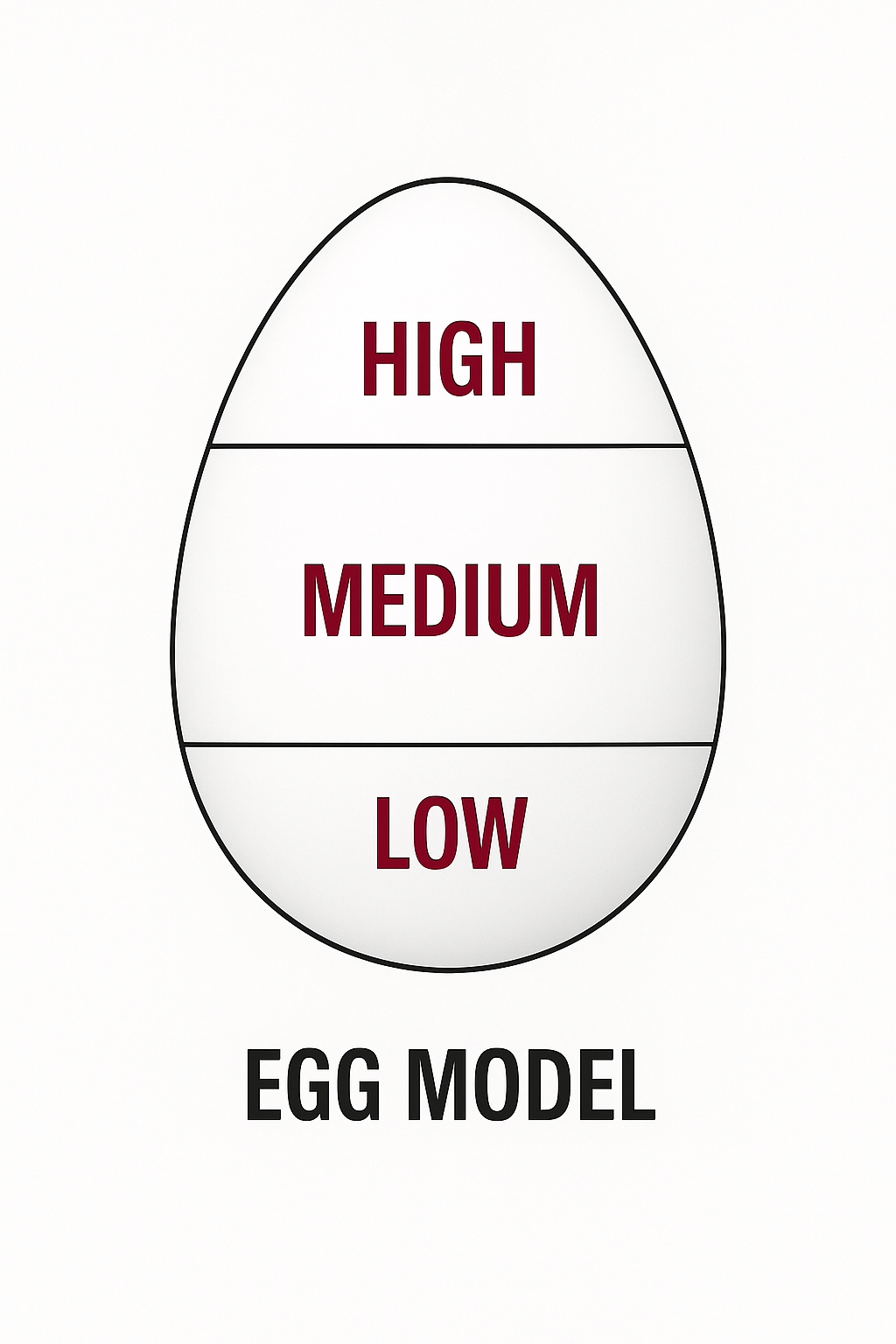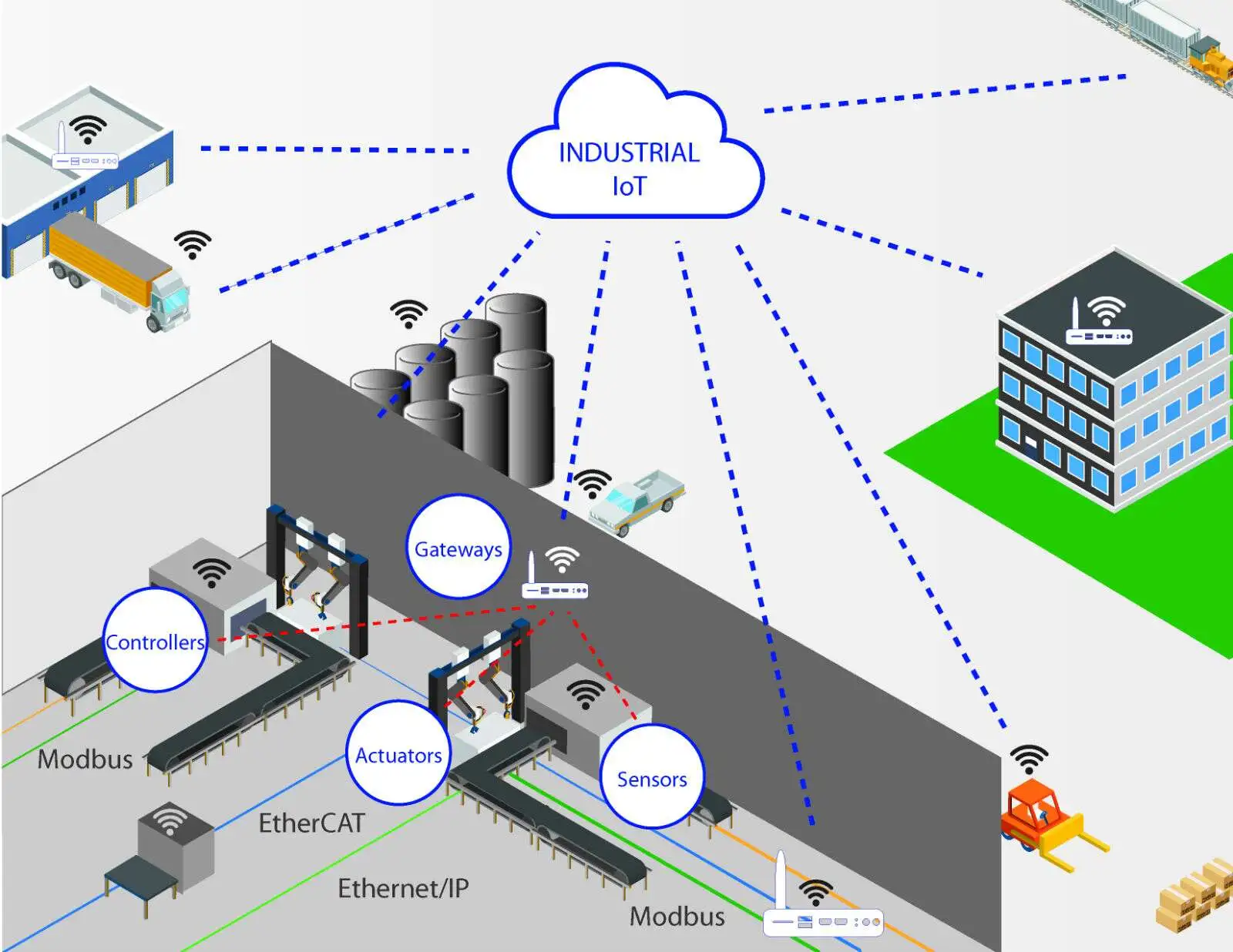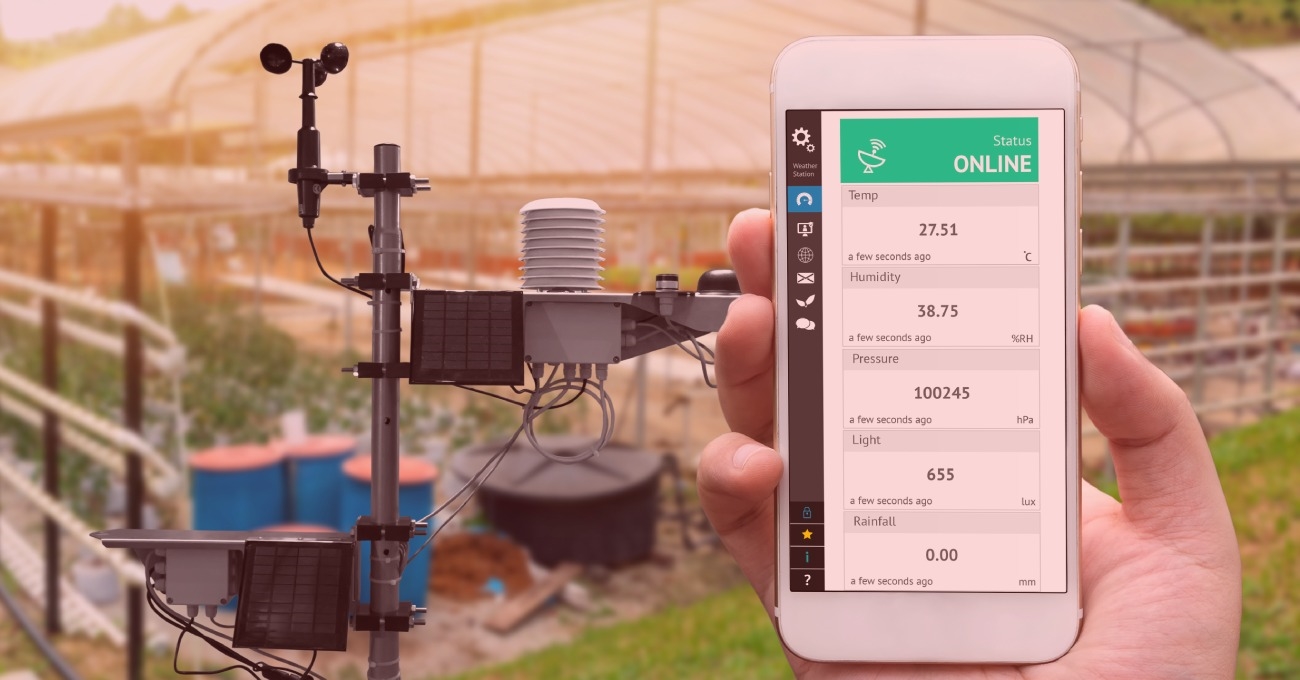
Over the years, the cellular network industry has introduced various wireless technologies to enable IoT device connectivity. The cellular IoT options include LTE Cat M, EC-GSM-IoT, and NB-IoT. These technologies aim to minimize the additional cost of cellular connections and make remote wireless connectivity more cost-effective.
3GPP Release 17 and RedCap
The introduction of enhanced cellular IoT features is expected to help realize 5G's potential for IoT. 3GPP Release 17 introduces enhancements that allow lightweight 5G devices, known as RedCap devices, to operate on 5G networks.
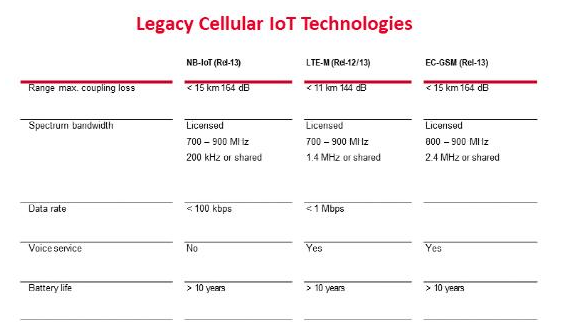
As the name implies, 5G RedCap devices access the internet via 5G networks, but they do not offer the full capabilities of more advanced 5G terminals such as smartphones. RedCap devices—such as wearables, sensors, monitoring devices, and other IoT endpoints—do not require the high throughput, large bandwidth, or low latency defined by full 5G specifications. Instead, they typically face stricter constraints on power consumption and cost. RedCap can benefit from wide 5G deployment while using reduced 5G capabilities to balance functionality, cost, and power.
3GPP specifies three primary RedCap use cases: industrial sensors, monitoring devices, and wearables. The 3GPP technical report TR 38.875 defines the data rates, end-to-end latency, and service availability for each use case, as shown in Table 2.
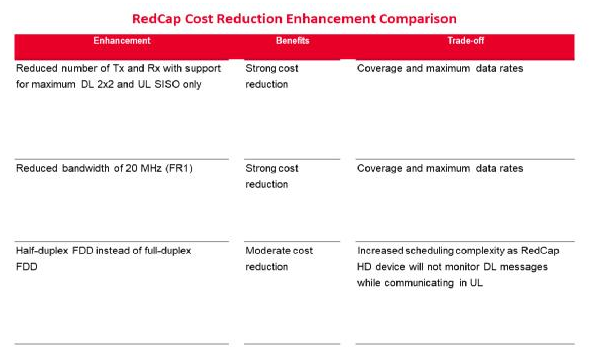
Balancing Cost and Performance
To reduce complexity, cost, and power consumption, RedCap devices require fewer antennas than standard 5G devices. This lowers cost and reduces the number of MIMO layers. Downlink on RedCap devices supports only 2x2 MIMO, while uplink supports only single-input single-output (SISO).
RedCap devices support narrower bandwidths than standard 5G terminals, and reduced bandwidth can significantly lower power amplifier (PA) cost. RedCap supports 20 MHz bandwidth in FR1 and 100 MHz in FR2.
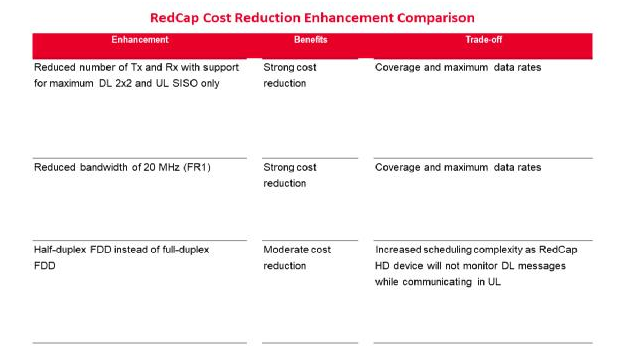
Another cost-reducing enhancement introduced in 3GPP Release 17 for RedCap is support for half-duplex FDD transmissions. While half-duplex FDD can substantially reduce cost by allowing RedCap devices to use a transfer switch instead of the duplexer required for full-duplex FDD, it has drawbacks. RedCap devices cannot transmit and receive simultaneously. Using half-duplex FDD also creates several issues:
- Unable to simultaneously monitor downlink and uplink scheduling information on the same set of signals
- Cannot monitor downlink information while in uplink mode
- Cannot send uplink control information while monitoring the downlink
If conflicts occur, RedCap devices decide on an action according to implementation specifics.
Low-power Enhancements
RedCap simplifies parts of the 5G specification to improve power efficiency, reduce power consumption, and extend battery life. For example, compared to the full 5G specification, RedCap uses a streamlined network monitoring scheme. It reduces the number of blind decodes and control channel elements that devices need to monitor on the physical downlink control channel (PDCCH), lowering the energy required for these tasks.
Another power-saving strategy in RedCap is extended discontinuous reception (eDRX) cycles. When a device is in an idle or non-connected state, RedCap can increase eDRX intervals to significantly extend battery life. Longer eDRX cycles are particularly beneficial for fixed wireless sensors and similar use cases, since increased eDRX reduces device mobility. For example, a wireless sensor that monitors a rail track may only need to connect periodically to transmit data.
Additionally, for devices not at the cell edge, RedCap relaxes wireless resource management (RRM) requirements and introduces an RRC inactive state, allowing terminals to perform small data transfers without changing their RRC connection status. Both enhancements aim to reduce power consumption and extend battery life.
Reduced Device Complexity
RedCap enhancements also include a set of simplifications to reduce device complexity. These measures can lower power consumption and device cost, but their primary objective is to reduce complexity so that RF components can be adapted to very small or unconventional device form factors, such as smart glasses and other wearables.
Simplifications to reduce device complexity include support for a single operator (no carrier aggregation) and support for a single connection, meaning RedCap devices operate only in 5G standalone mode. RedCap also supports 5G power class 3, which limits the device's equivalent isotropically radiated power (EIRP) and allows for smaller battery size.
Impact on 5G Networks
The R17 enhancements described above focus mainly on RedCap devices. However, these features also affect 5G networks.
The network must accommodate RedCap-specific features during random access procedures and while devices remain connected. New information elements (IEs) introduced for RedCap allow bandwidth to be dynamically matched to device operations. For example, some new IEs pertain to admitting RedCap terminals into a cell or granting permission to use half-duplex mode. Some IEs are required for RedCap devices to access a cell; if those IEs are not detected, the cell will bar RedCap connections, and the device may need to initiate RRC procedures to connect to another cell that provides the relevant IEs.
Another IE allows fixed devices or devices at the cell edge to apply a simplified RedCap technical profile.
Some new IEs support partial bandwidth (BWP) configurations, enabling flexible spectrum usage and adaptive bandwidth allocation to devices based on need, thereby reducing power consumption. Reduced bandwidth also affects the random access channel (RACH) procedures devices use to access the network. The network can assign a BWP to RedCap devices or reduce the BWP size required when these devices connect. However, the benefit of this improvement is limited because RedCap devices support only 20 MHz in FR1.
To enable network support for RedCap devices, new signaling parameters and procedures in R17 require engineers to verify device compatibility before allowing a connection. 5G device developers also need specific tools to inspect RedCap parameters for debugging.
 ALLPCB
ALLPCB




